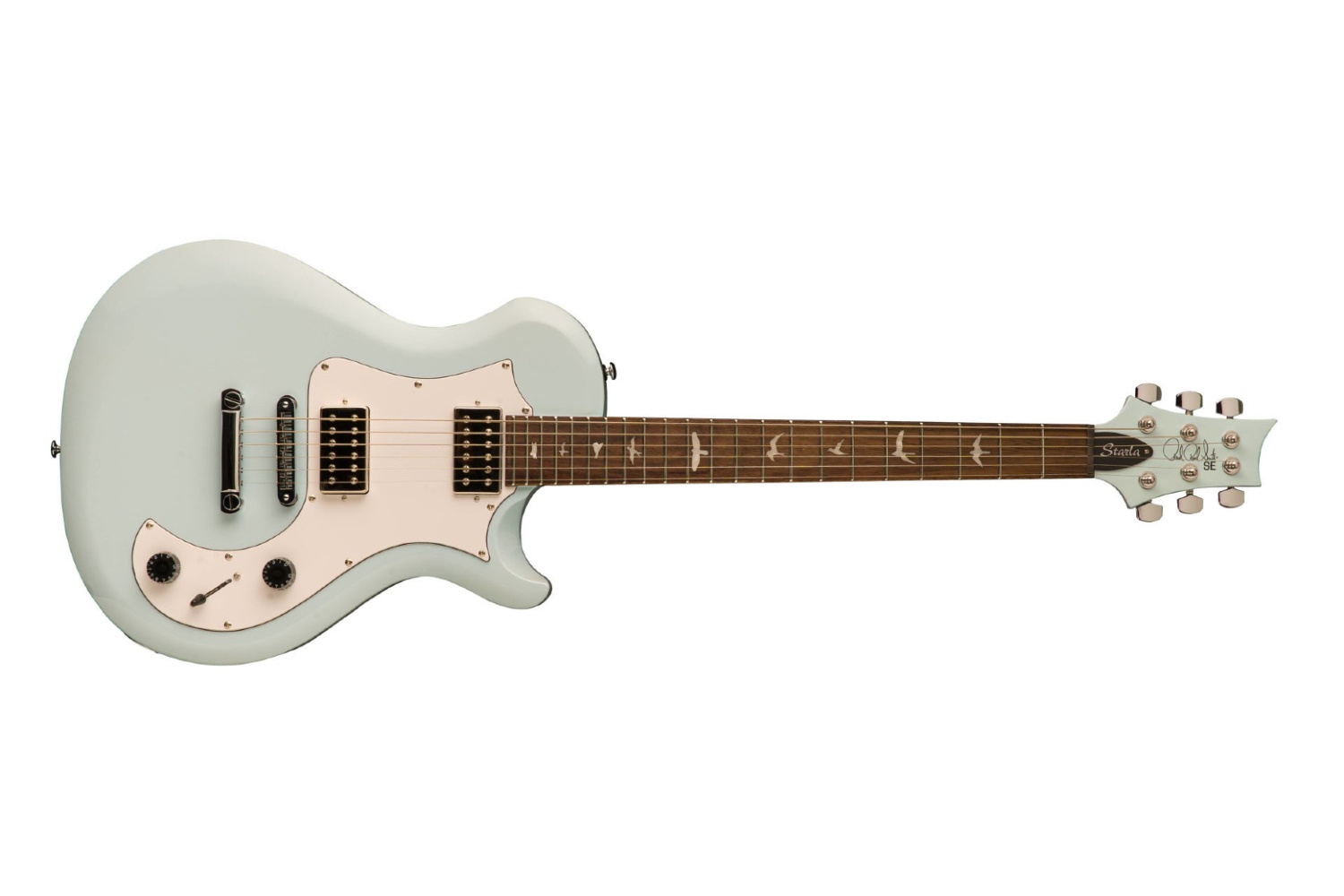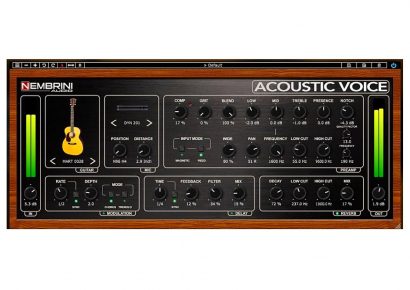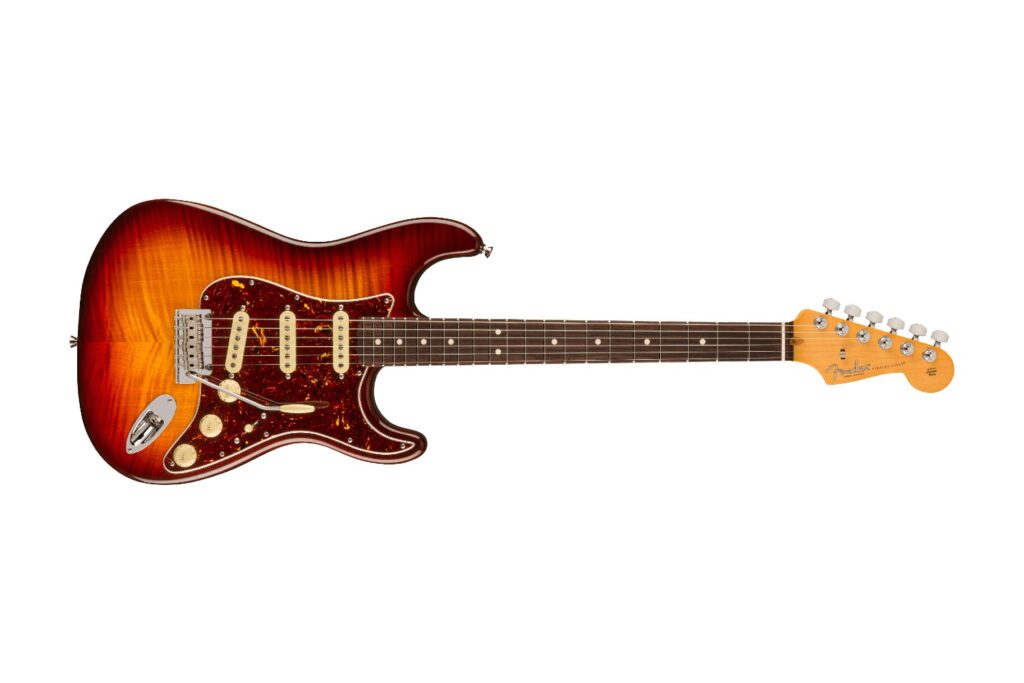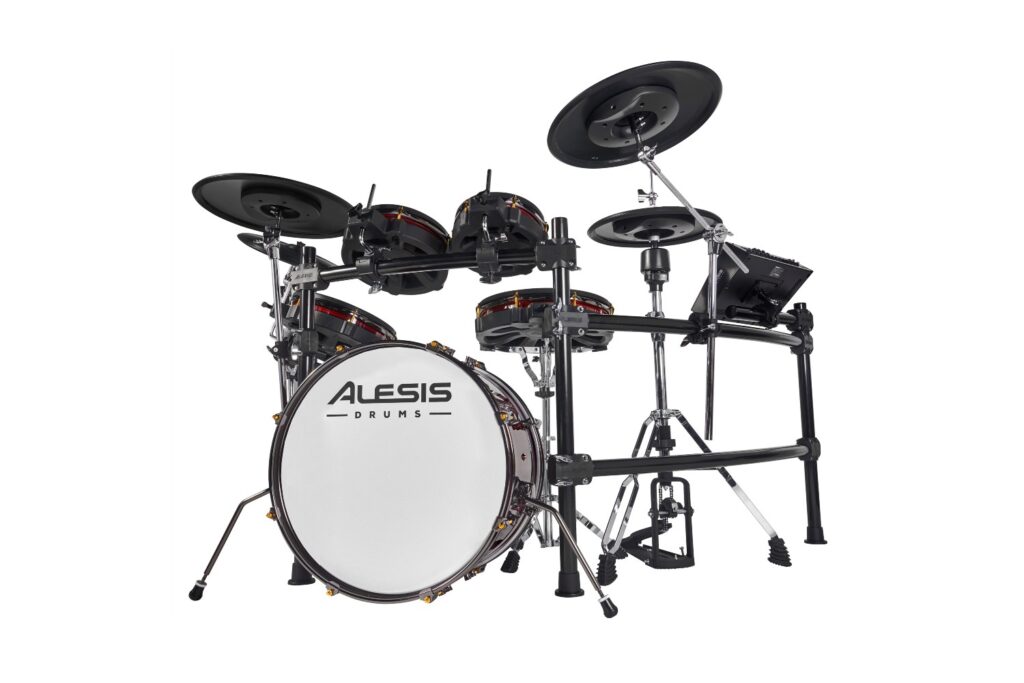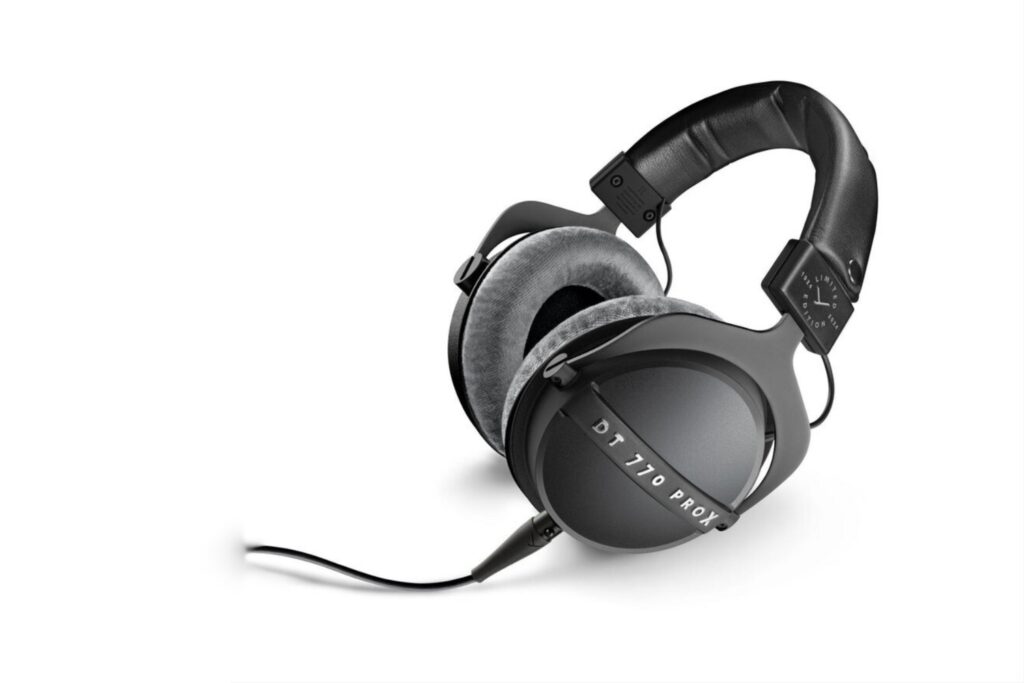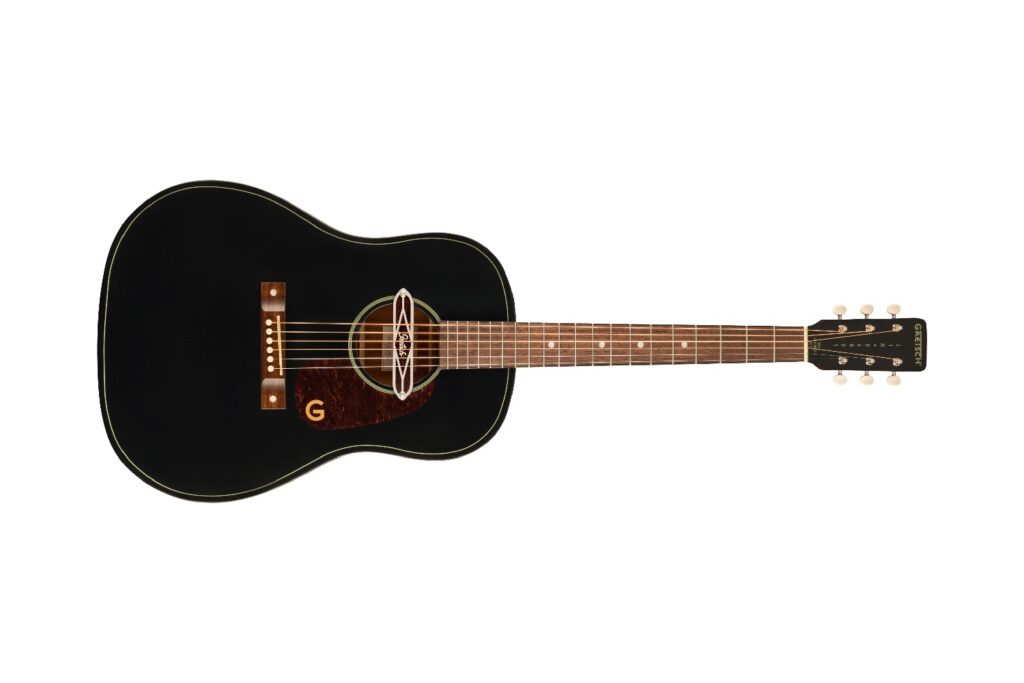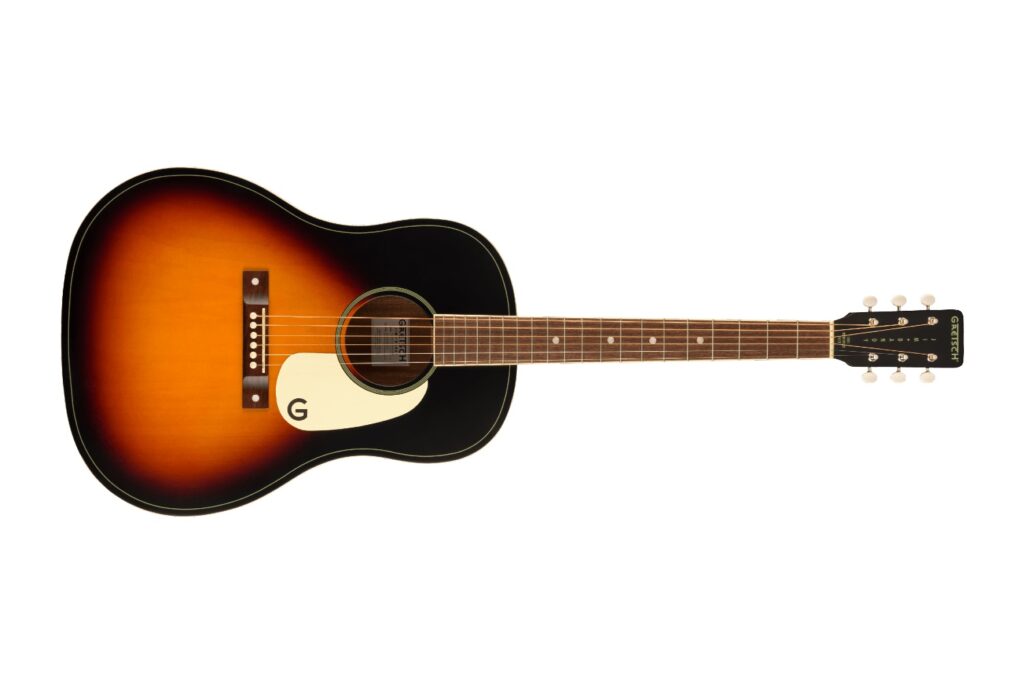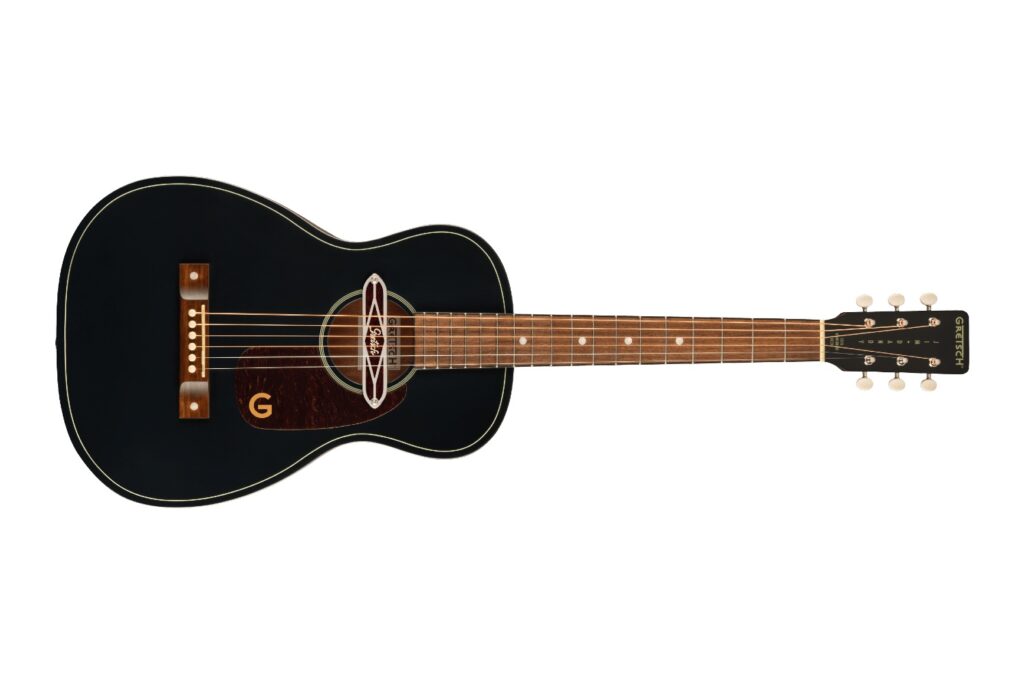Electric Factory | Enquire for Pricing
Widely renowned as the modern maestros of electric guitar-making, few companies can rival the influence of Paul Reed Smith Guitars. Since the ‘70s, Smith’s constructions have been favoured by some of the all-time greats, with their sleek looks, widely varied tones and killer playability taking them a whole cut above the rest.
In the year 2000, PRS launched the SE range, introducing an affordable alternative for players to get their hands on a PRS guitar without needing to shell out big bucks. These Indonesian-made models are often crafted from exquisite woods and fitted with impressive electronics for guitars of their price range, and are almost certainly the best value brand available on the market today.
Catch up on all the latest music gear reviews here.
The PRS SE Starla Electric Guitar differs from most Paul Reed Smith designs with its stripped-back, retro appearance. This particular model was first released under the Core Line, and has made its way to the S2 line built in Maryland following the success of the 2007 Mira designed by Joe Knaggs.
Last year, the Starla was introduced into the SE range, making it more accessible than ever before. It features a traditional PRS scale length of 25” and a set-neck construction, which is becoming increasingly rare for guitars at this price-point.
This SE Starla immediately grabs me with its beautiful finish, its retro fittings and aesthetics, its shiny silver PRS DS-02 Humbuckers, and “old school” bird inlays to proudly announce itself as part of the PRS family.
It feels wonderful, light but well-built, and the flat top knobs boast a chunky feel that is undeniably cool. Meanwhile, the neck feels really comfortable in my hands and encourages a sort of robust, chord-laden style of playing, with a comfy little heel down in the neck pocket making for an all-round smooth playing experience.
The SE Starla’s body and neck are both cut from solid mahogany, and are dressed in a deep, gorgeous powder blue. It’s a shade that suits many aesthetics, as opposed to a brighter or deeper blue. I look at it and can’t help but think “I would love to put a tortoise shell pickguard on it”, but also white is an excellent pairing and of course, a winning combo for a vintage look.
The lighter shades contrast and complement its rosewood fingerboard which has 22 frets, and a scale length of 25” and displays the classic PRS bird inlay. The PRS designed nickel tuners are a cool-toned match made in heaven yet again, and of course while speaking of hardware, it’s hard not to go past the Grover two-piece bridge – an ever-reliable friend for any guitarist. Previous editions of the Starla once featured a Bigsby tremolo, and while a tune-o-matic and stoptail is definitely a sturdier option, it could be cool to see a Bigsby-equipped model make its way into the SE range.
The SE Starla’s neck shape is fat and wide, and it really does make a difference when placing your fingers on the board. It’s funny that I should say it feels more like an acoustic guitar in some ways because when you split both of the pickups, it really can give an airy and light sound resembling one very much.
While this little beauty can certainly go hard on gain, its beautiful, sparkly twang when played clean is a unique sound not to be overlooked. The Starla is loaded with two DS-02s Double Slug humbuckers, which boast a very cool chrome covering on top, while spit-coil functionality allows you to play with a wild array of different tones.
These pickups may look equipped for big riffs, but overall, they sound much twangier and brighter then what you’d expect of a classic sound. Both the neck and middle pickups really are quite versatile, being able to do vintage sounding cleans that have a jangle and sparkle to them, and classic rock gain sounds. Even styles that require more nuanced cleans, such as jazz, funk and neo-soul, are made easy by the Starla.
When on the neck pickup alone, it has a robust, rounded but not overly boomy sound, and when you split the pickup, this sound gets more pronounced. The bridge pickup sounds warm and full, and when split it sounds completely different, very jangly. With gain, it is still a little bright but incredibly pronounced and the bridge pickup humbucker runs incredibly hot, great for classic rock sounds. The three-way pickup selector switch is also easy to use and feels super sturdy, although it does feel a bit misplaced between the volume and tone pots.
It looks good, sounds great, comes with a gig bag, is a third of the price of its predecessors… overall, it’s really hard to fault the PRS SE Starla, and especially when it comes in such a striking Powder Blue finish! Although it’s not built in Maryland in the S2 line, it is undoubtedly strong, well-built and feels sturdy, proving that the PRS SE plant is right up there with the very best.
This guitar definitely surprised me in its versatility in sound. It surprised me with its comfort of feel, and it’s definitely worth checking out for anyone looking to add a new workhorse to their inventory.
Head to PRS guitars for more information and for local enquiries hit up, Electric Factory.
